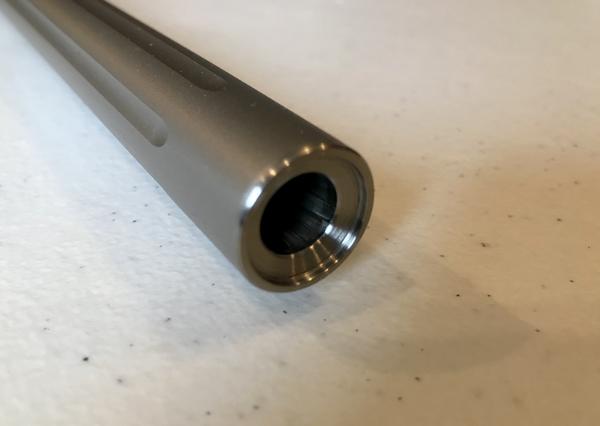- Joined
- Feb 11, 2013
- Messages
- 334
- Reaction score
- 463
According to the foremost expert on everything Thompson, we are all dumbass shooters…
It is called DAS. Dumb ass shooter. When loading with a QLA people place the short starter on the ball which has not been set into the bore with a soft wooden ball starter and pop it down with the palm of their hand. because the QLA is larger than the bore the brass rod of the short starter can move off the ball and the palm pop results in the short starter being driven against the inner crown of the rifling eventually damaging it. The same applies to cleaning with a Jag. A damaged crown will not impact sabot rounds and patched round balls as greatly as it will a maxi or engraved bullet. When the QLA has been removed and the bore re-Crowned the flaws are removed.
Anyone who has a clear understanding of mill and lathe work will tell you the same thing it is near imposable to coin barrel incorrectly on a lathe as the barrel is turning not the cutter. I have modern rifles with coined barrels that shoot in excess of 1000 yards consistently. Likewise, I have won muzzleloader competitions on a national level shooting coined muzzles.
As far as being the local guru on T/C Not that it matters on the subject of machining. When national shooting and hunting magazines including the national muzzleloading rifle association's magazine have maters they need clarified on regarding Thompson Center side locks they call me. Telling me I am considered the nation's foremost leading expert on T/C muzzleloaders then request clarification.
I can bring millions of people who think Joe Biden is a genus. Does that make it true?
It is called DAS. Dumb ass shooter. When loading with a QLA people place the short starter on the ball which has not been set into the bore with a soft wooden ball starter and pop it down with the palm of their hand. because the QLA is larger than the bore the brass rod of the short starter can move off the ball and the palm pop results in the short starter being driven against the inner crown of the rifling eventually damaging it. The same applies to cleaning with a Jag. A damaged crown will not impact sabot rounds and patched round balls as greatly as it will a maxi or engraved bullet. When the QLA has been removed and the bore re-Crowned the flaws are removed.
Anyone who has a clear understanding of mill and lathe work will tell you the same thing it is near imposable to coin barrel incorrectly on a lathe as the barrel is turning not the cutter. I have modern rifles with coined barrels that shoot in excess of 1000 yards consistently. Likewise, I have won muzzleloader competitions on a national level shooting coined muzzles.
As far as being the local guru on T/C Not that it matters on the subject of machining. When national shooting and hunting magazines including the national muzzleloading rifle association's magazine have maters they need clarified on regarding Thompson Center side locks they call me. Telling me I am considered the nation's foremost leading expert on T/C muzzleloaders then request clarification.
I can bring millions of people who think Joe Biden is a genus. Does that make it true?








